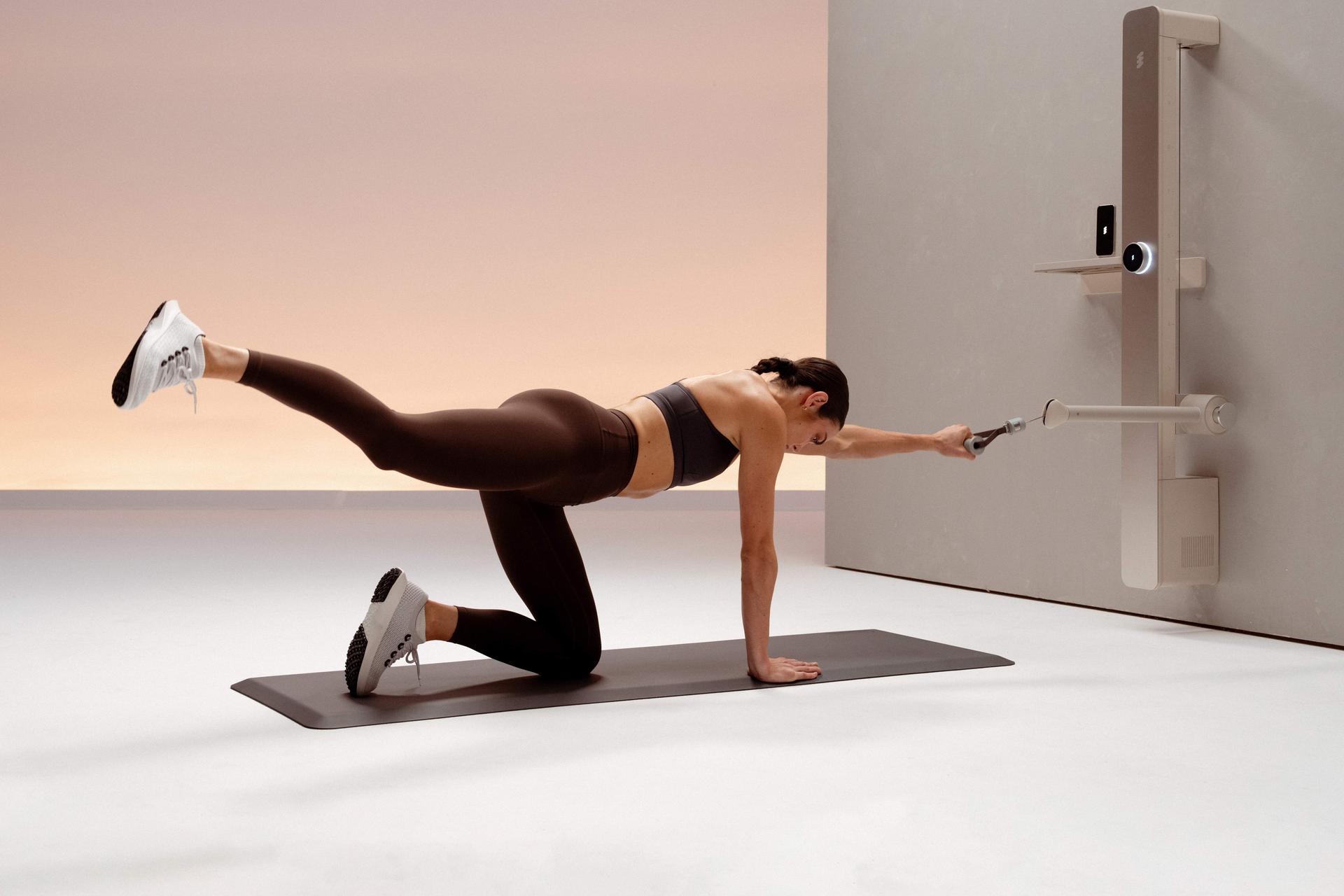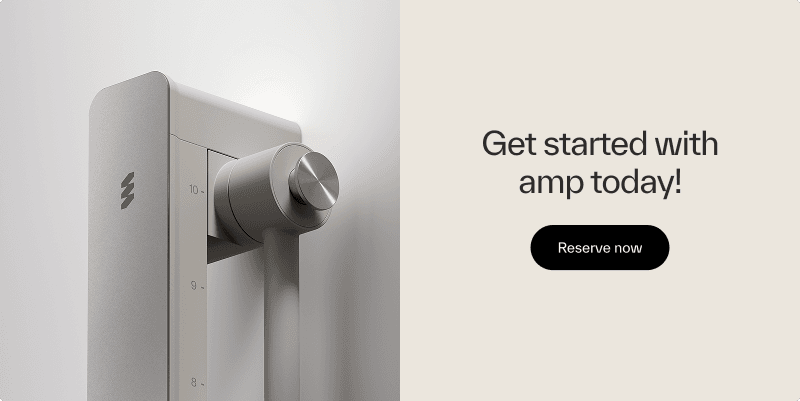The Best Deep Core Exercises for 2025: Strengthen from the Inside Out
The Best Deep Core Exercises for 2025: Strengthen from the Inside Out
Emiliano Blanco
-2025-08-10

When we talk about the core, there are two things that typically come to mind for most people: six-pack abs and crunches. While we love having that attractive definition and crunches can help us get there, neither are particularly helpful when it comes to the job our abdominal muscles are meant to do, which is to support the spine and organs. This job mostly falls to the muscles of the deep core, which are less visible but arguably more important than your six pack. Here, we’re diving into everything you need to know about the deep core, plus sharing five of our favorite deep core exercises.

What is the Deep Core?
We already mentioned that the rectus abdominis, aka the six-pack muscles, are not part of the deep core. So what muscles are? There are five muscles that make up the deep core. Here’s what they are, where they are, and what they do.
Transverse Abdominis
The deepest of all the deep core muscles, the transverse abdominis muscles run from the lower ribs down to the pelvis, wrapping around the abdomen and essentially holding everything in.
Diaphragm
Located under your lungs, these are the muscles you engage every time you breathe.
Pelvic Floor
At the opposite end of the core from the diaphragm, your pelvic floor muscles support your organs, pelvis and lower back. These muscles also play a key role in preventing incontinence, maintaining sexual pleasure, and supporting safe and healthy vaginal childbirth in women.
Multifidus
These are narrow yet strong muscles that run all along the spine to maintain spinal stability.
Internal Obliques
Smaller and deeper than the external obliques, the internal obliques play a key role in allowing you to twist safely.
Benefits of Working the Deep Core
So why do you need a strong deep core? Here are some of the reasons.
Better Posture and Less Back Pain
As we briefly mentioned, the deep core functions mainly in a support and stabilization role. When the muscles are weak, your spine is not as well supported, which can lead to injuries—but keeping it strong can limit or get rid of pain. A study published in the Journal of Back and Musculoskeletal Rehabilitation found that core strengthening exercises improved low back pain, even in people who had been experiencing back pain for over a year.
Better Balance
Good balance is critical to healthy aging, helping you maintain optimal mobility and limiting your risk of falls. And when it comes to balance, your deep core muscles are the ones that keep you stable, not your six-pack muscles.
Flatter Belly
Yes, working your deep core muscles can help you achieve that flat belly you’re working toward. The transverse abdominis and obliques especially act as a corset around your midsection, so targeting them in your fitness routine will keep your waistline trim and keep your belly from sticking out.
Speedier Postpartum Recovery
It’s no secret that the abdominal muscles are stretched way out during pregnancy, which is why a lot of postpartum exercise programs are focused on helping women reconnect with their core. Indeed, deep core strengthening both during and after pregnancy can help limit common issues like incontinence, according to research in the International Journal of Sports Physical Therapy, as well as lower the risk of diastasis recti, when the abdominal muscles separate down the middle during pregnancy, according to a study in the Journal of Musculoskeletal and Neuronal Interactions.
Best Deep Core Exercises
Now that we’ve explained why you should strengthen your deep core, it’s time to get started. Try these five deep core exercises that specifically target the area, plus a surprising bonus movement that can help you engage your deep core.
Plank
Muscles working: transverse abdominis, pelvic floor, multifidus
How to do it: Come into a push up position with your hands directly under your shoulders with your body in a straight line and hold. Don’t let your hips sink toward the floor. Other variations include lowering to your forearms or putting your knees down.
Bird Dog
Muscles working: transverse abdominis, multifidus, obliques
How to do it: Come onto all fours. At the same time, extend one arm forward and the opposite leg back so that you are making a straight line from your heel to your hand that is parallel to the floor. Pull your arm and leg in and repeat on the same side or alternate sides.
Dead Bug
Muscles working: transverse abdominis, pelvic floor
How to do it: Lie on your back on the floor with your arms extended straight up toward the ceiling and your legs in a tabletop position, shins parallel to the floor and knees over hips. Lower one straight arm and the opposite leg until they hover just above the floor, then return to start. Repeat on the same side or switch sides.
Hollow Hold
Muscles working: transverse abdominis, pelvic floor, obliques
How to do it: Lie on your back on the floor with your knees bent and feet flat. Pull your belly button into your back and curl your head, neck, and shoulders off the ground, then extend your legs, keeping your feet off the floor. If you can, straighten your arms over your head and hold.
Bear/Bear Crawl
Muscles working: transverse abdominis, obliques, multifidus
How to do it: Come onto all fours. Keeping your back flat and parallel to the floor, lift your knees, maintaining right angles in both legs. Hold the position, or crawl forward a few steps and then back.
Bonus: Diaphragmatic Breathing
One of the best ways to engage your deep core? Diaphragmatic breathing, also known as belly breathing or deep breathing. Not only does deep breathing engage and strengthen your diaphragm, but it can also help you find and connect to the other muscles of your deep core so you can better utilize them in the above exercises.
How to do it: Lie on a comfortable surface or sit in a chair. Place one hand on your chest and one on your stomach. Inhale slowly through your nose so that the hand on your stomach rises as your stomach expands; the hand on your chest should not move. Exhale through pursed lips, as if you’re blowing out a candle, letting your stomach fall; your chest still shouldn’t move. Practice for a few minutes at a time.
Let’s Slim, Strengthen and Stabilize
Working out the muscles of your deep core is critical to achieving your desired physique, plus avoiding pain and aging gracefully. While the exercises above are a great starting point, you can take your deep core workouts to the next level with the amp fitness device. The engaging and creative strength training routines will challenge your muscles like never before.
Frequently Asked Questions
When will my order be delivered?
From the time of purchase, your amp takes 1-3 weeks to be delivered. Your shipping date is based on when you placed your order. We’ll send you tracking information once your amp ships, letting you keep an eye on its progress.
Where can I set up the device?
The device is designed for versatile setups, whether in a home gym, living room, or enclosed garage. Ensure the space has a sturdy, level surface and access to a standard power outlet.
What should I expect during installation?
Our expert installation team will handle everything from inspecting your space to assembling, calibrating, and testing the device for optimal performance. They’ll ensure everything is set up perfectly.
What mobile devices are compatible with amp ?
amp works seamlessly with most iPhones running iOS 17 or later. Simply download our app to unlock its full potential, monitor your workouts, and access personalized features. If you’re unsure about compatibility, check your device’s operating system in the settings menu.
What's included in the amp digital membership?
The amp digital membership leverages AI to transform your fitness experience, providing advanced tracking, automatic weight adjustments, and unlimited access to personalized, gamified workouts designed to keep you motivated and help you reach your goals.With robust multi-user support, everyone can enjoy a tailored and personalized experience, ensuring their unique preferences and needs are seamlessly met. Required 12-month amp membership ($23/month, billed monthly)Membership begins upon delivery and is billed monthly.
What exercises can I do with amp?
amp supports a wide variety of exercises, including strength training, cardio, recovery routines, and more. Its versatility allows for full-body workouts targeting every muscle group, with options like squats, presses, rows, curls, and functional movements. Whether you’re focused on building strength, improving endurance, enhancing mobility, or achieving a balanced fitness routine, the device offers tailored programs and endless possibilities to meet your goals.
Can I use amp without the app subscription?
The app subscription is required for a simple reason - it's what turns amp from a piece of equipment into your complete strength suite. The app works behind the scenes to track every rep, analyze your form, and automatically adjust weights based on how you're performing. This takes the guesswork out of strength training and ensures you're always training at the right level. Beyond tracking, the app gives you access to a growing library of workouts, real-time form guidance, and customized programming that adapts to your progress. You can create and save your own routines, get intelligent exercise alternatives, and see exactly how and where you're improving - all without having to piece together multiple apps or workout plans on your own. Think of it as your personal strength coach that never takes a day off built right into your workout experience, helping you train smarter and more effectively every time you step up to amp.
What is the price of amp?
The amp device is $1,795 (excluding tax and shipping) and includes: White glove installation A one-year commitment to the amp iOS app at $23/month 90-day return window Shipping costs are calculated at checkout based on your shipping address and includes delivery and professional installation of your amp.